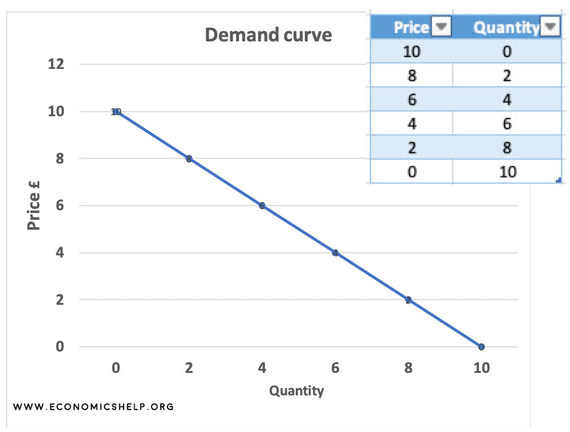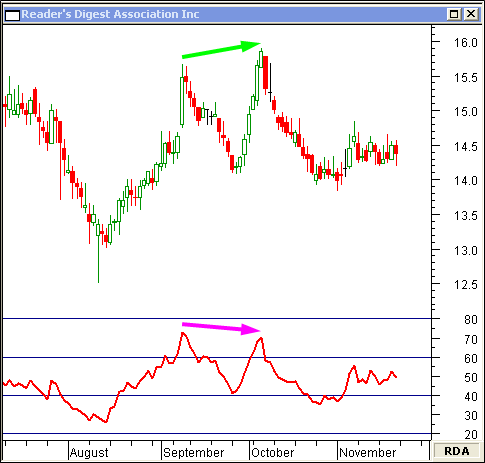
With this type of letter of credit, payment does not happen immediately after the documents are accepted. A deferred payment letter of credit is naturally a better deal for buyers than for sellers, as it allows the buyer time to find fault with something the seller does. The Green Clause LC allows the beneficiary to receive an advance payment from the nominated bank to finance the purchase, collection, and preparation of goods for shipment. The beneficiary can also use the funds to store and insure the goods until they are ready for export.
Zoom Contradicts Its Own Policy About Training AI on Your Data – yro.slashdot.org
Zoom Contradicts Its Own Policy About Training AI on Your Data.
Posted: Mon, 07 Aug 2023 18:48:22 GMT [source]
This payment can be made by the buyer, or by the buyer’s issuing bank, giving the buyer some additional time to fulfil the debt. Letters of Credit are useful to any business that trades in large volumes, both domestically, and cross-border. They are important to ensure the cash flow of a company and lowers the risk of default due to non-payment from the end customer. It is also possible that the advance payments are payable outside of the letters of credit from the importers to the exporters. In reality, there will be an instruction from the importer to the advising bank.
Banking Daily News: 9th July 2023
The bank then must rely on the fact that there was, in fact, a material mistake.[10] A fact that if true would entitle the buyer to reject the items. Documents presented after the time limits mentioned in the credit, however, are considered discrepant. The Letters of Credit (LC) module constitutes a part Oracle FLEXCUBE’s
comprehensive trade financing system.
If this were not the case, the bank would be entitled to withhold payment even if the deviation is purely technical or even typographical. You can process the availments against an LC either through the LC
module or through the bills module of Oracle FLEXCUBE. Availment charges
can be levied and cash collateral adjusted, during an availment. Oracle FLEXCUBE provides
you with the facility to calculate the cash collateral either as a percentage
of the LC amount or as a fixed amount. When the LC amount is amended, you also
have the option of adjusting the collateral amount accordingly. In the LC module, the method of collecting commissions and levying
charges is flexible.
What Is a Red Clause Letter Of Credit? Definition and Purpose
There will be an instruction from the importer to the advising bank, which will be for a percentage of credit available to be advanced prior to shipment. We know that without foreign trade a country would not able to dispose off its excess produce for profit, nor obtain what it needs most and are not available domestically. Foreign Trade involves Export of goods, services, people, capital and import of the same from other countries. Through foreign trade a country earns foreign exchange by utilizing for payment for imports. To secure a red clause letter of credit, an importer will often require the exporter to sign a letter of indemnity noting that if the exporter doesn’t meet the necessary obligations, the importer bears no financial loss.
- Like other LC contracts, if the seller fails to make the shipment deadline or the trade deal is canceled, the bank recovers the advance amount from the buyer.
- Commissions can be collected in advance or in arrears, periodically
or non-periodically. - The beneficiary will be exposed to the risk of its own failure to comply with credit conditions or failure of, or delays in payment from, the issuing bank.
Acting for and on behalf of TBB, the warehousing agent ensures that the exact quantity of petroleum products financed by the bank is discharged into the tanks at the depot. For example, if you have earned our trust, we may request you supply us LPFO even when we know you don’t have enough fund to execute the contract. The red clause letter of credit will allow you to draw a certain amount of money to fulfil our order.
The green clause letters of credit are more common in commodity trades or for the regular supply of goods by established trade partners. Large international trade deals also require the shipment of goods in series of delivery packages. The advance payments through the green clause can work as a series of payments.
This is advantageous because the issuing bank often has a personal banking relationship with the buyer. Red clause and green clause lc and green clause LCs work as a means of advance payment to the seller. These LCs provide the essential financial guarantee to the seller as a primary function with any documentary credit. According to the Green Clause LC, goods to be exported must be stored in a bonded warehouse. The buyer allows for an unsecured loan to be issued as part of the letter of credit, which is essentially an advance payment. The seller or beneficiary can then use the money to buy supplies, manufacture goods or complete work, and ship goods to the buyer.
5.2 Letters of credit
Similar to other Financial law instruments, a Letter of Credit utilises several legal concepts to achieve the economic effect of shifting the legal exposure from the seller to the buyer. The policies behind adopting this principle of abstraction are purely commercial. Whilst the bank is under an obligation to identify that the correct documents exist, they are not expected to examine whether the documents themselves are valid. That is to say, the bank is not responsible for investigating the underlying facts of each transaction, whether the goods are of the sufficient – and specified – quality or quantity. A Red Clause Letter of Credit usually has a stipulation written in red ink that permits a seller to draw up to a fixed sum from the issuing bank before shipment takes place. In other words, it helps in facilitating pre-shipment finance for a supplier who needs financing to conclude a transaction.

Many banks offer letters of credit, so you can get one by reaching out to a representative at your bank. Banks with dedicated international trade or commercial divisions will most likely offer letters of credit. If your bank doesn’t offer letters of credit, it can probably point you toward an institution that will. Therefore, it is important for all parties involved in a Red Clause LC transaction to be aware of the potential risks and to take appropriate measures to mitigate them.
4.2 Transferable and Non-transferable LCs
For example, suppose a builder promises to deliver a completed building by a prespecified date or face a predetermined penalty. The buyer could ask the builder to obtain a standby L/C to guarantee the contract. Thus, if the builder fails to keep its promise, the buyer can collect the penalty amount from the bank that issued the L/C. The builder would then be responsible to pay its bank the penalty amount disbursed earlier by the bank. In banking, standby L/Cs are used as credit enhancements for securitizations and backups for commercial paper when the market gets skittish, that is, they replace loan commitments, thereby avoiding the risk of the MAC clause. As a result, it is the issuing bank who bears the risk that is linked with non-payment of the buyer.
- D) A letter of credit that allows the beneficiary to make changes to the credit terms after it has been issued.
- An irrevocable letter of credit cannot be changed without authorization from all parties involved.
- To secure a red clause letter of credit, an importer will often require the exporter to sign a letter of indemnity noting that if the exporter doesn’t meet the necessary obligations, the importer bears no financial loss.
- Historically, the special clause remained part of the full trade agreement, and the clause used to be inked in red, hence the name.
- The buyer extends these letters of credit in hopes of ensuring the products will be manufactured on time.
They provide a less expensive way of ensuring payment than a letter of credit, and have the advantage that both buyers and sellers are familiar with their requirements. Those involved in documentary collections should familiarise themselves with the current ‘Uniform Rules for Collections’ which are in document URC 522 issued in 1996, published by the International Chamber of Commerce. Under a documentary letter of credit the seller is paid against the presentation to the bank of the documents required by the contract for sale and specified in the buyer’s instructions to the issuing bank. A letter of credit is a payment method that smoothes the way for international trade and a variety of other transactions. With a letter of credit, buyers and sellers can reduce their risk, ensure timely payment, and be more confident about reliable delivery of goods or services. Learning about different types of letters of credit can help you choose which one to use and understand what you’re working with.
A red clause letter of credit allows for an exporter to obtain pre-shipment finance, although available credit is usually only part of the estimated value. These advances are then deducted from the face amount of the credit when it is presented for payment. Red Clause Letters are usually employed to facilitate international exports and trade. Standby L/Cs are also used to guarantee performance in contracts involving greater variety and complexity than the simple international trade contract described above. Through standby L/Cs, banks now operate in areas that were once the exclusive domain of bonding, title, and insurance companies.
This will be for a percentage of credit that is available for advance prior to the shipment. Furthermore, the amount will be provided in a local currency and will be against security from the exporter. The amount of the Advance, plus interest and fees are deducted from the available credit. Invoices will be prepared on the basis of the certificates of quality and quantity. The buyer should be required to pay against presentation of the issue of such documents or the seller’s letter of indemnity if not all the shipping documents are available at the time of presentation.

The buyer approves for a certain portion or percentage of the total face value of the Letter of Credit as an advance.
Documentary Credits … good or bad?
Crucial to a letter of credit is the beneficiary’s (the seller) attempt to isolate itself from the credit risk of the buyer. That is to say, it is concerned primarily with the ability of the buyer to pay for the goods. If the documents do not comply with the terms of the letter of credit they are considered Discrepant. At this point, the Nominated Bank will inform the Beneficiary of the discrepancy and offer a number of options depending on the circumstances after consent of applicant. Refusal cannot depend on anything other than reasonable examination of the documents themselves.
Commissions can be collected for the initiation
and amendment events of an LC. The definition of commission rules facilitate
the uniform and efficient application of commission across all LCs processed
under a product. They can be further classified into Time Based (Could be Cumulative or Non-Cumulative) and Value-Based. CLEAN LETTER OF CREDIT- the term “Clean” refers to an instrument that does not call either financial document or commercial document. Uniform Rules for Collection, ICC Publication no. 552 defines a “Clean” document as a one that is “Financial Document that is not accompanied by any commercial document”. The Red Clause LC facility often attracts the middleman trading agents that work with both buyers and sellers.

As an instrument of international trade, It is one of the most
secure methods for a seller to be paid. Besides credit risk considerations,
LCs is the customary business practice for long distance trade and a
particularly important commission earning service for any bank. The downside to the red clause letter of credit is if the seller doesn’t use it for necessary working capital needs. The buyer extends these letters of credit in hopes of ensuring the products will be manufactured on time. If the seller doesn’t use the credit to pay for necessary expenses the letter of credit is for naught.
